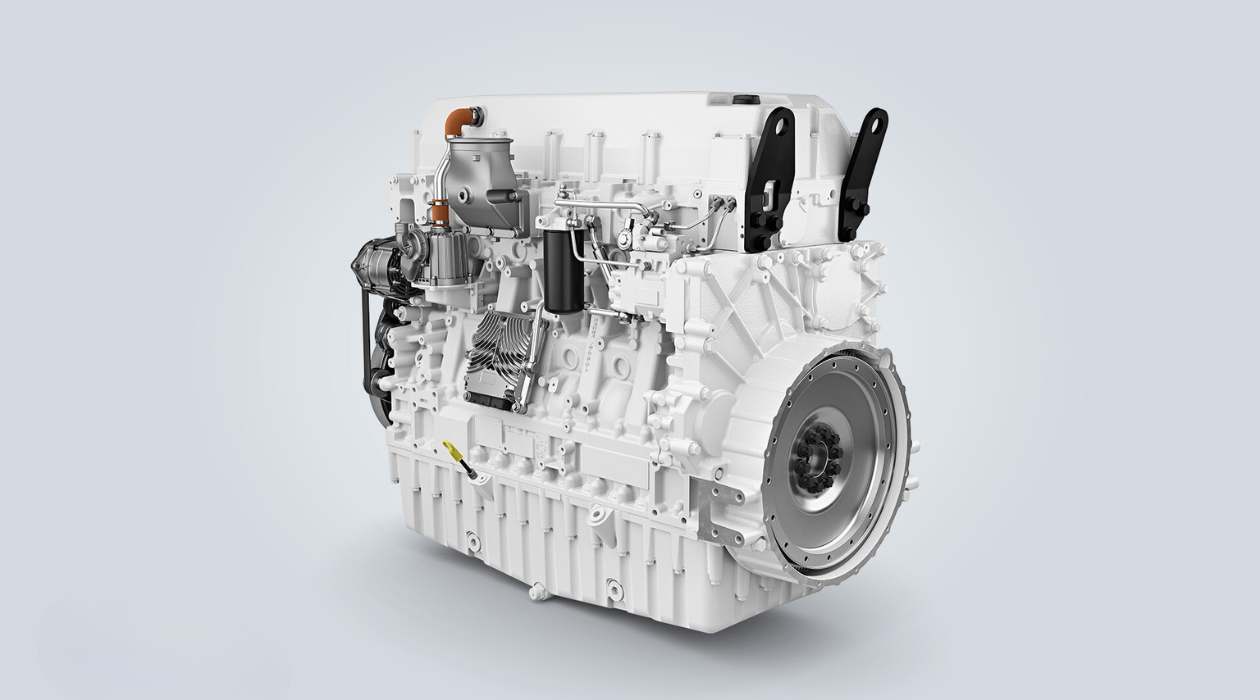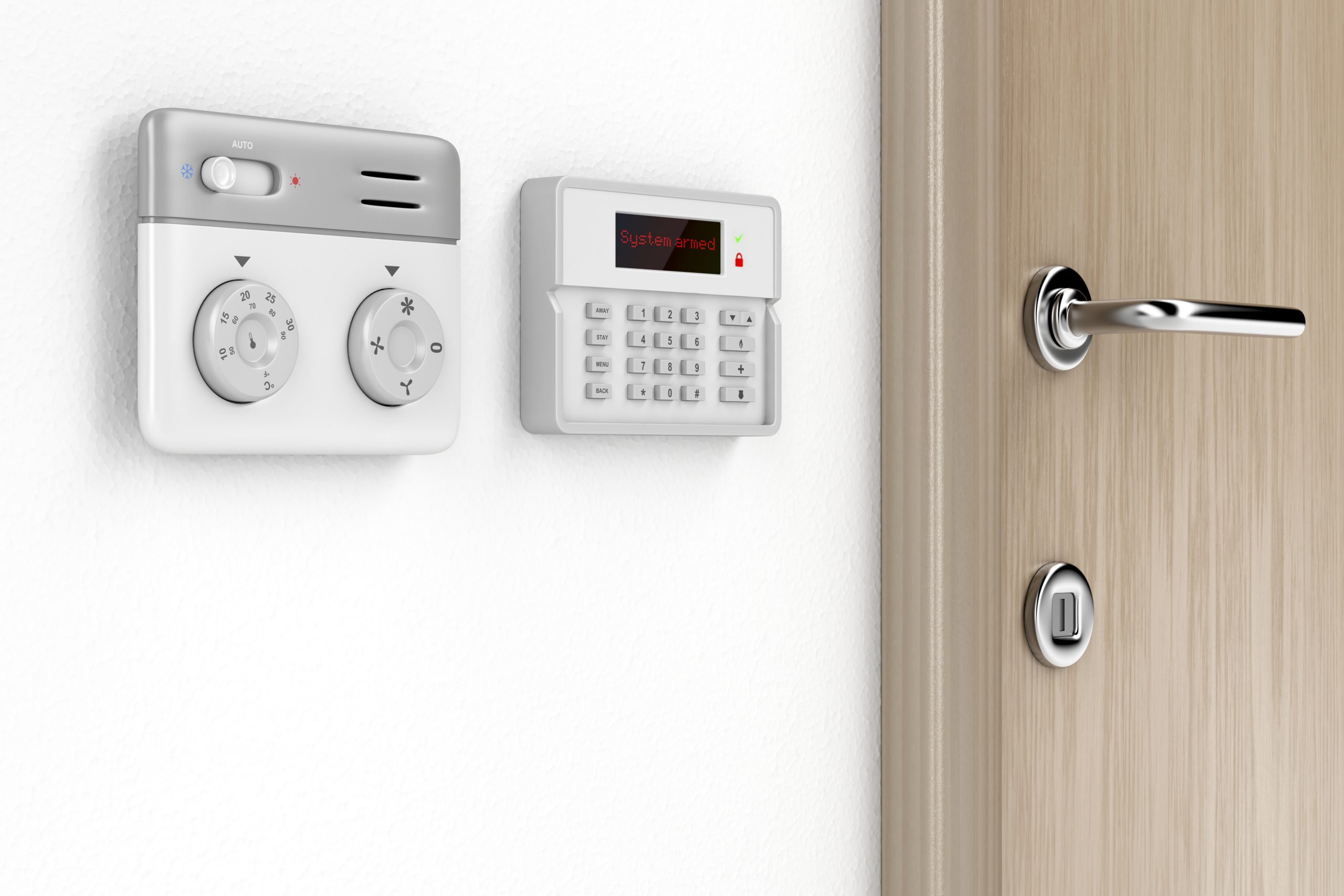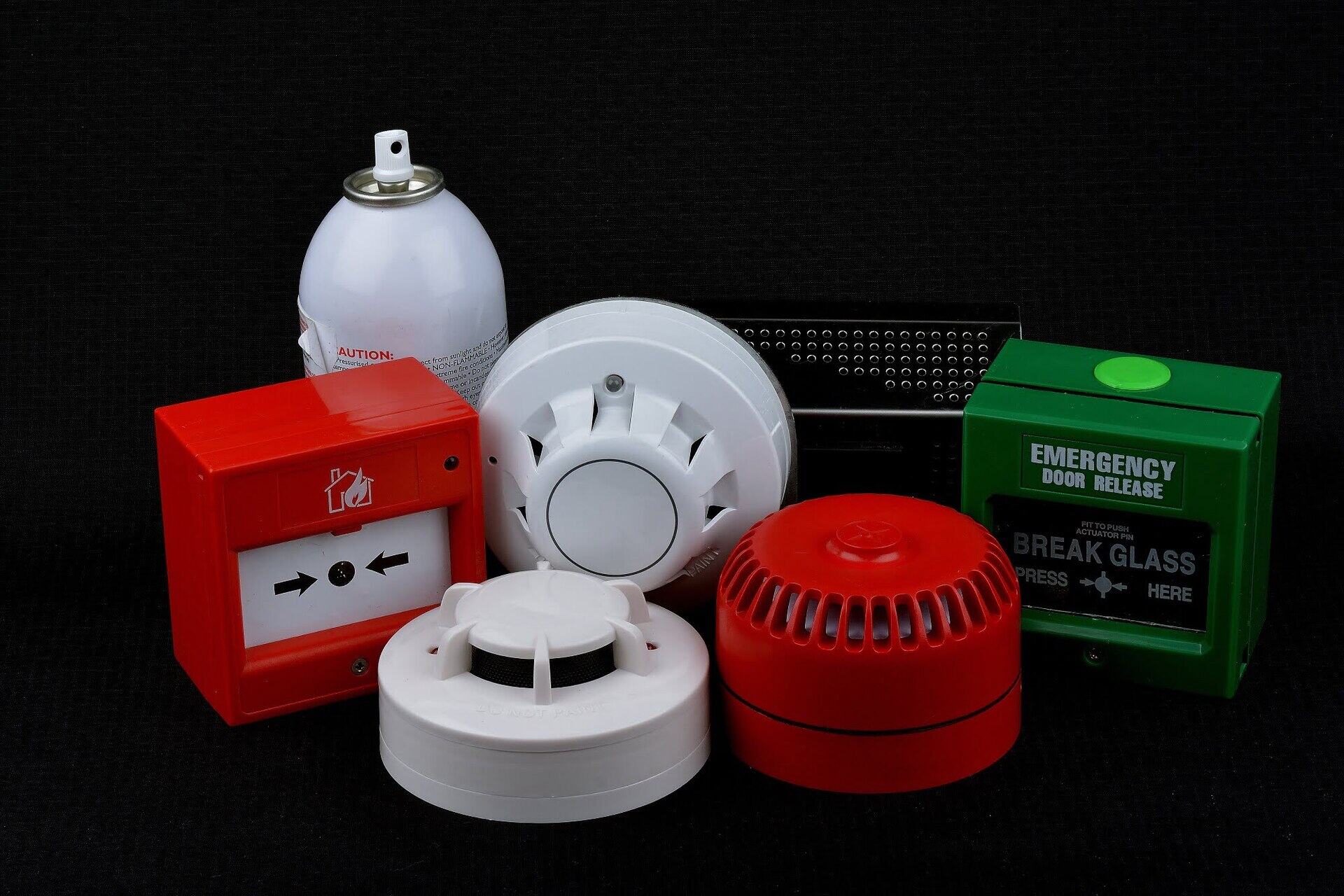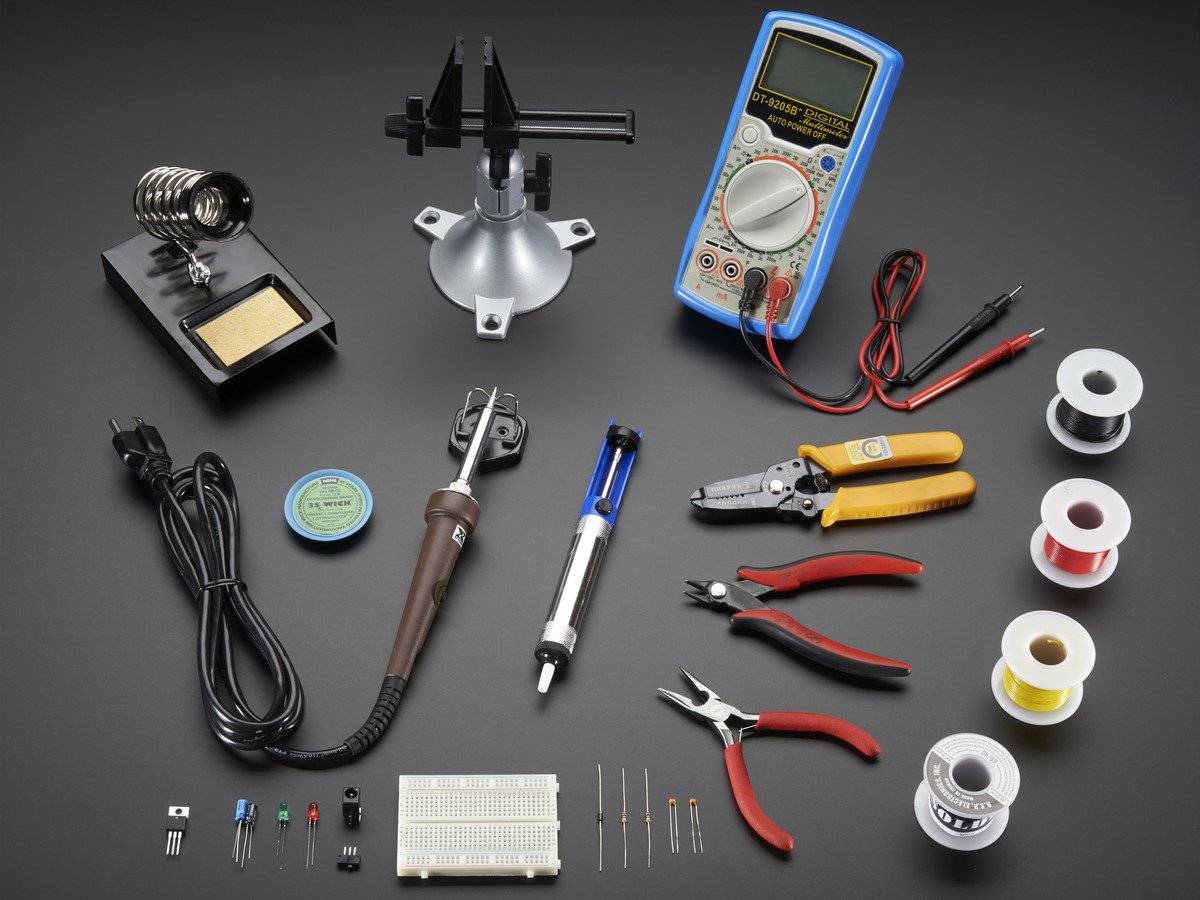Home>Home Security and Surveillance>What Type Of Switch Is Commonly Used In Automobile Alarm Systems?
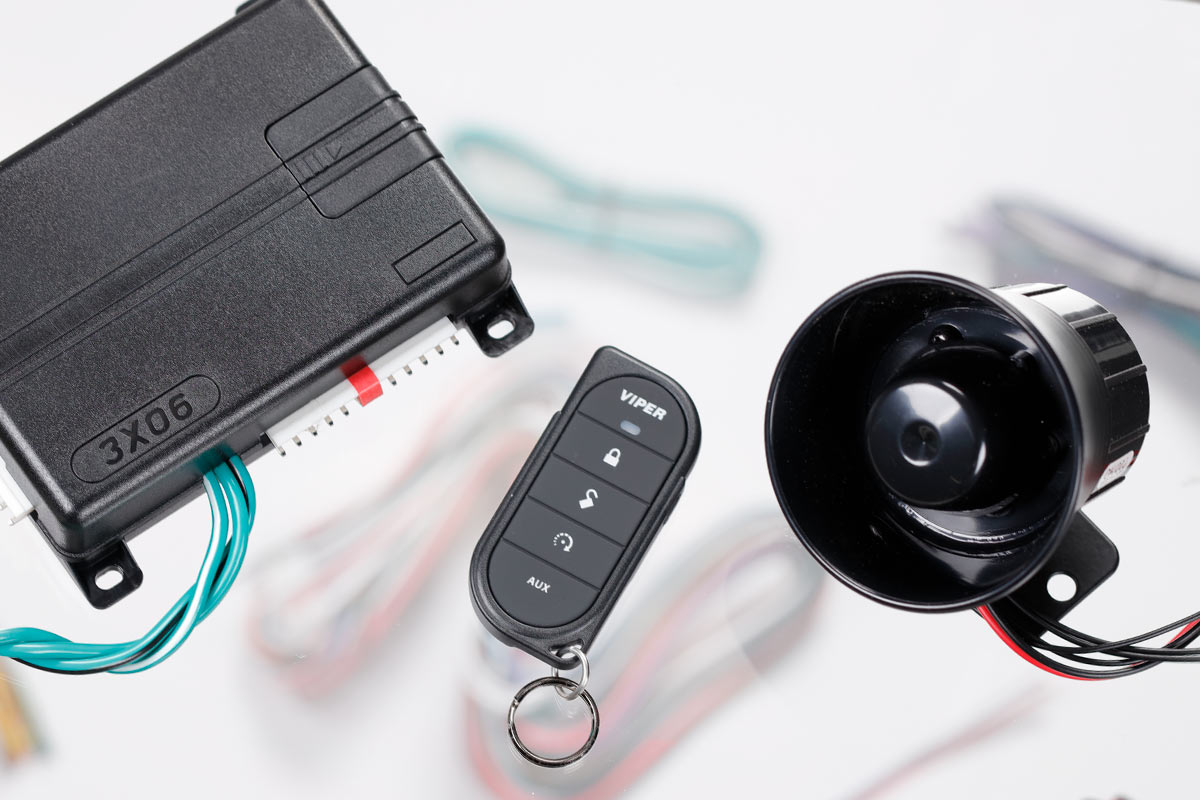

Home Security and Surveillance
What Type Of Switch Is Commonly Used In Automobile Alarm Systems?
Modified: March 6, 2024
Learn about the common switch used in automobile alarm systems and ensure optimal home security and surveillance.
(Many of the links in this article redirect to a specific reviewed product. Your purchase of these products through affiliate links helps to generate commission for Storables.com, at no extra cost. Learn more)
Introduction
The security of our automobiles is of paramount importance, and one of the key components that ensure this security is the automobile alarm system. These systems are designed to detect and deter unauthorized access to vehicles, providing peace of mind for owners and acting as a strong deterrent against theft or vandalism.
While automobile alarm systems consist of various components, one crucial element is the switch. Switches play a vital role in detecting specific events or movements and triggering an alarm response in the system. They act as sensors that detect changes in the vehicle’s environment and send signals to the alarm system’s control unit.
In this article, we will explore the different types of switches that are commonly used in automobile alarm systems. We will delve into their features, specifications, and the role they play in securing our vehicles. Whether you are considering installing an aftermarket alarm system or looking to enhance the capabilities of your current system, understanding the various switch options available will help you make informed decisions.
So, if you’ve ever wondered what type of switch is commonly used in automobile alarm systems, keep reading to learn more about the key components and features that ensure the security of your vehicle. Whether it’s detecting the opening of a door or sensing vibration, the switches in automobile alarm systems are essential in keeping your vehicle safe from intruders. Let’s dive in and explore these switches in more detail.
Key Takeaways:
- Different types of switches, such as door switches and hood switches, play a crucial role in automobile alarm systems by detecting unauthorized access and triggering the alarm to protect vehicles from theft or vandalism.
- When selecting switches for an automobile alarm system, consider factors like compatibility, sensitivity, durability, and ease of installation to enhance the security of the vehicle and provide peace of mind for the owner.
Read more: What Is Common Wire In HVAC
Key components in automobile alarm systems
Automobile alarm systems are complex security systems that consist of various components working together to protect vehicles from theft or unauthorized access. Understanding these key components is essential to grasp the functioning and effectiveness of the alarm system. Let’s take a closer look at some of the primary components found in modern automobile alarm systems:
1. Control Unit: The control unit serves as the brain of the alarm system. It receives signals from various sensors and switches, processes the information, and triggers the alarm or other programmed responses accordingly. It is responsible for arming and disarming the system and controlling the overall functionality.
2. Sirens/Horns: Sirens or horns are the audible output devices of the alarm system. When triggered, they emit loud, attention-grabbing sounds to alert the vehicle owner and others nearby of a potential threat.
3. Key Fob/Remote: The key fob or remote is the handheld device that allows the owner to remotely control the alarm system. It typically has buttons for system arming, disarming, panic mode, and other programmed functions. The remote communication with the control unit is usually done through radio frequency (RF) signals.
4. Sensors: Sensors are crucial in detecting specific events or movements that may indicate a security breach. These sensors are strategically placed in different parts of the vehicle to monitor and detect unauthorized access or tampering. Common types of sensors include motion sensors, impact sensors, tilt sensors, and glass break sensors.
5. Switches: Switches are the focus of our discussion in this article. They are electronic devices that detect changes in the vehicle’s environment and send signals to the control unit. These signals act as triggers for the alarm system, alerting the owner or activating other security measures.
Understanding the role and importance of these key components is essential in comprehending the overall functionality of an automobile alarm system. The switches, in particular, play a critical part in detecting specific events or movements that may indicate a potential security threat. In the next section, we will explore the different types of switches commonly used in automobile alarm systems and their specific applications.
The role of switches in automobile alarm systems
Switches are integral components of automobile alarm systems, acting as sensors that detect changes in the vehicle’s environment and trigger appropriate alarm responses. They play a crucial role in ensuring the security of our vehicles by detecting specific events, such as the opening of doors or the ignition being tampered with, and sending signals to the control unit.
The primary function of switches in automobile alarm systems is to monitor and detect unauthorized access to the vehicle. When an unauthorized entry is detected, the switches send signals to the control unit, which then activates the alarm system. This can include setting off the vehicle’s alarm, flashing lights, or even disabling the ignition to prevent the vehicle from being stolen.
Switches in automobile alarm systems are designed to be highly sensitive and accurate in detecting changes in the vehicle’s environment. They are engineered to differentiate between normal movements and suspicious activities or attempts at vehicle intrusion. This sensitivity ensures that the alarm system is triggered only when necessary, reducing the likelihood of false alarms and minimizing inconvenience to the vehicle owner.
Another crucial role of switches is to provide feedback for the vehicle owner. They are designed to send signals to the control unit, which may then activate visual or audible alerts on the key fob or remotely through a smartphone app. This feedback allows the owner to monitor the status of their vehicle’s security and take appropriate action if needed.
Additionally, switches in automobile alarm systems can also work in conjunction with other security features, such as immobilizers or tracking systems. For example, if a switch detects an unauthorized entry, it may trigger the immobilizer system, which prevents the engine from starting. This multi-layered approach to vehicle security ensures a higher level of protection against theft or unauthorized access.
Overall, switches form a critical part of the intricate network of components that make up an automobile alarm system. They provide the necessary detection and signaling capabilities to ensure the security of vehicles. In the next section, we will explore the different types of switches commonly used in automobile alarm systems and their specific applications and features.
Different types of switches commonly used in automobile alarm systems
Automobile alarm systems employ various types of switches to detect specific events or movements and trigger an appropriate response. Each type of switch serves a unique purpose and plays a vital role in securing the vehicle. Here are some of the commonly used switches in automobile alarm systems:
1. Door switches: Door switches are installed on each door of the vehicle, including the trunk or tailgate. These switches detect when a door is opened or closed. They are typically connected to the control unit, which triggers the alarm if a door is opened without proper authorization. Door switches are crucial in detecting unauthorized entry or tampering with the vehicle’s doors.
2. Hood switches: Hood switches are mounted near the hood latch and detect when the hood is opened. If an unauthorized person attempts to access the engine compartment, the hood switch triggers the alarm system. Hood switches are essential in preventing theft of valuable engine components and deterring unauthorized access to the engine.
3. Ignition switches: Ignition switches are designed to detect any tampering or unauthorized attempts to start the vehicle. These switches monitor the ignition circuit and send signals to the control unit if there are any changes or abnormalities. The control unit can then activate the alarm system or immobilize the vehicle to prevent theft.
4. Vibration sensors: Vibration sensors are sensitive to any vibrations or movements caused by potential tampering or impact to the vehicle. These sensors are typically mounted on the vehicle’s chassis or interior and detect sudden jolts or movements. Vibration sensors can differentiate between normal vibrations, such as those caused by passing vehicles, and suspicious or forceful impacts. If an abnormal vibration is detected, the sensor sends a signal to the control unit, triggering the alarm system.
5. Tilt sensors: Tilt sensors are designed to detect changes in the angle or inclination of the vehicle. They are commonly used to protect against wheel or tire theft, as well as towing attempts. Tilt sensors are highly sensitive and can detect even slight changes in the vehicle’s position. If the vehicle is tilted beyond a certain threshold, the tilt sensor triggers the alarm system.
6. Motion detectors: Motion detectors use infrared or microwave technology to detect any movement within the vehicle’s interior. These sensors are particularly useful in preventing theft of valuables inside the vehicle. If motion is detected, the sensor sends a signal to the control unit, prompting the alarm system to activate.
These are just a few examples of the switches commonly used in automobile alarm systems. Each type of switch serves a specific purpose in detecting and responding to various security threats. By combining different types of switches, automobile alarm systems create a comprehensive security network to protect vehicles against theft and unauthorized access. In the next section, we will explore the features and specifications of commonly used switches in automobile alarm systems.
Door switches
Door switches are an essential component of automobile alarm systems. These switches are installed on each door of the vehicle, including the trunk or tailgate, and serve to detect the opening and closing of the doors. Door switches play a vital role in detecting unauthorized entry or tampering with the vehicle’s doors, providing an added layer of security to the alarm system.
Door switches are typically designed as magnetic reed switches. They consist of two main components: a magnet and a switch. When the door is closed, the magnet is in proximity to the switch, causing it to remain closed and completing the circuit. This indicates to the control unit that the door is secure. However, when the door is opened, the magnet moves away from the switch, causing it to open and break the circuit. This triggers the control unit to activate the alarm system.
The sensitivity of door switches can be adjusted to suit the requirements of the vehicle and the owner’s preferences. This allows for customization in terms of how quickly the alarm system is triggered once a door is opened. Additionally, some advanced door switches also feature tamper detection capabilities. If someone attempts to tamper with or forcefully remove the switch, a tamper signal is sent to the control unit, triggering the alarm and alerting the owner.
Door switches are designed to be reliable and durable, capable of withstanding the mechanical stress of repetitive opening and closing. They are often sealed to protect against water, dust, and other environmental factors, ensuring their longevity and consistent performance. This is particularly important for door switches installed in exterior locations like the trunk or tailgate, as they are exposed to the elements.
One important consideration when installing door switches is ensuring proper alignment and positioning. The switch and magnet should be aligned so that they are effectively communicating with each other when the door is closed. If the alignment is off, the switch may not accurately detect the opening or closing of the door, resulting in false alarms or the alarm not being triggered when it should.
In summary, door switches act as crucial sentinels in automobile alarm systems. They provide the means to detect unauthorized access or tampering with the vehicle’s doors, triggering the alarm system to deter potential thieves or vandals. With their reliability, durability, and tamper detection features, door switches contribute to the overall security and peace of mind for vehicle owners.
Hood switches
Hood switches are an integral part of automobile alarm systems, serving to detect the opening of the vehicle’s hood. These switches play a crucial role in preventing theft of valuable engine components and deterring unauthorized access to the engine compartment.
Hood switches are typically designed as momentary push-button switches or magnetic reed switches, similar to door switches. They are installed near the hood latch and are positioned in a way that the contacts are separated when the hood is closed, indicating that the hood is secured. When the hood is opened, the switch contacts come into contact, completing the circuit and sending a signal to the control unit.
The primary function of hood switches is to ensure that any attempt to access the engine compartment without proper authorization triggers the alarm system. This is especially important as the engine compartment houses valuable components, such as the engine itself and various electrical systems. Thieves may target these components for theft or unauthorized modifications, putting the vehicle at risk.
Hood switches are designed to be sensitive to even slight movements or vibrations that occur when the hood is forcibly opened. This ensures that the alarm system is triggered promptly, providing a deterrent effect and alerting the vehicle owner and those nearby to the potential security breach. The sensitivity of hood switches can often be adjusted to suit the specific vehicle and the owner’s preferences.
Like door switches, hood switches are often sealed to protect against water, dust, and other environmental factors. This protects the switch’s performance and longevity, even in harsh conditions. Additionally, some hood switches may also feature tamper detection capabilities. If a thief attempts to tamper with or forcefully remove the hood switch, a tamper signal is sent to the control unit, which can activate the alarm system.
Proper installation and alignment of the hood switch are crucial for its optimal performance. Adequate positioning ensures that the switch accurately detects the opening and closing of the hood. It is important to ensure that the switch is not obstructed by any foreign objects or interference that could impede its functionality.
In summary, hood switches are essential in safeguarding the engine compartment of a vehicle from theft and unauthorized access. By detecting the opening of the hood, these switches trigger the alarm system, discouraging potential thieves and alerting the vehicle owner. With their sensitivity, tamper detection features, and ability to withstand environmental conditions, hood switches play a vital role in enhancing the security of an automobile.
Ignition switches
Ignition switches are crucial components in automobile alarm systems, specifically designed to detect and prevent unauthorized attempts to start the vehicle’s engine. These switches play a significant role in deterring theft and ensuring the security of the vehicle.
Ignition switches are typically electronic devices that monitor the ignition circuit of the vehicle. They are tasked with detecting any tampering or unauthorized access to the ignition system. When the key is inserted into the ignition cylinder and turned, the ignition switch completes the circuit, allowing electrical power to flow to the engine. If an unauthorized person attempts to start the vehicle without the proper key, the ignition switch registers a change or abnormality in the ignition circuit and sends a signal to the control unit.
Upon receiving the signal from the ignition switch, the control unit can activate various alarm responses or security measures. These may include sounding the vehicle’s alarm, disabling the ignition system, or triggering additional tracking or immobilization systems. The goal is to prevent the vehicle from being stolen or operated by unauthorized individuals.
Ignition switches are designed to be durable and reliable, capable of withstanding the frequent use and mechanical stress associated with turning the key. They are engineered to handle various environmental conditions and are often sealed to protect against moisture, dust, and other potential contaminants.
In addition to their primary function of detecting unauthorized ignition attempts, some ignition switches may offer additional features. For example, they may integrate with the vehicle’s immobilizer system. This system requires a valid key with a corresponding transponder chip to be present in order for the vehicle to start. If the ignition switch does not detect the correct transponder signal, it will not allow the ignition circuit to be completed, preventing the engine from starting.
When installing an ignition switch, proper alignment and connection to the ignition circuit are essential. This ensures accurate detection of changes or abnormalities and ensures that the switch is seamlessly integrated into the vehicle’s electrical system.
Overall, ignition switches act as the gatekeepers of the vehicle’s engine, preventing unauthorized access and unauthorized engine start attempts. With their ability to detect tampering, work in conjunction with immobilizer systems, and activate alarm responses, ignition switches greatly enhance the security of an automobile.
The commonly used switch in automobile alarm systems is the magnetic reed switch. It is a small, sealed switch with two metal reed contacts inside. When a magnet is brought near the switch, the contacts pull together to complete the circuit and trigger the alarm.
Vibration sensors
Vibration sensors are a vital component of automobile alarm systems, designed to detect any vibrations or movements that may indicate potential tampering or unauthorized access to the vehicle. These sensors play a crucial role in ensuring the security of the vehicle by detecting forceful impacts or suspicious movements that could indicate theft or vandalism.
Vibration sensors are typically mounted in strategic locations within the vehicle, such as the chassis or interior. They are highly sensitive and designed to differentiate between normal vibrations, such as road bumps or passing vehicles, and abnormal or suspicious movements. When these sensors detect a significant vibration or impact, they send a signal to the control unit of the alarm system.
The sensitivity of vibration sensors can often be adjusted to suit the specific requirements of the vehicle and the owner’s preferences. This allows for customization of the system to ensure that the alarm is only triggered when necessary. By properly calibrating the sensitivity, false alarms can be minimized while ensuring that the alarm is activated in the event of a real security threat.
Vibration sensors can be designed using different technologies, such as piezoelectric or accelerometers. These technologies are capable of detecting both high-frequency and low-frequency vibrations, enabling them to capture a wide range of movements. Some advanced vibration sensors also feature multiple-axis detection, allowing for more accurate sensing of movements in different directions.
One of the key advantages of vibration sensors is their ability to detect unauthorized access attempts even when other entry points, such as doors or windows, remain intact. For example, if a thief attempts to punch through a window or uses tools to force their way into the vehicle, the resulting impact or vibrations will be picked up by the vibration sensors, triggering the alarm system.
In addition to detecting unauthorized access, vibration sensors are also effective in detecting towing or jacking attempts. If a thief tries to tow the vehicle without disarming the alarm system, the vibrations caused by this movement will be detected by the sensors. Similarly, if someone tries to lift the vehicle for theft or removal of valuable components, the vibration sensors will register these movements.
When installing vibration sensors, it is important to strategically position them in areas that are likely to be targeted by thieves, such as near the door handles, windows, or high-value components. Proper alignment and installation ensure optimal performance and accurate detection of movements.
In summary, vibration sensors are crucial components of automobile alarm systems, providing an additional layer of security by detecting forceful impacts or suspicious movements. With their sensitivity, ability to differentiate between normal vibrations and security threats, and capability to detect unauthorized access or towing attempts, vibration sensors greatly enhance the security and protection of a vehicle.
Tilt sensors
Tilt sensors are important components of automobile alarm systems, designed to detect changes in the angle or inclination of the vehicle. These sensors play a key role in preventing wheel or tire theft, as well as detecting attempts at towing or lifting the vehicle without authorization.
Tilt sensors are typically installed in a strategic location within the vehicle, such as the chassis or undercarriage. They are designed to be highly sensitive, capable of detecting even slight changes in the vehicle’s position or angle. When the vehicle is tilted beyond a certain threshold, the tilt sensor sends a signal to the control unit of the alarm system.
The primary function of tilt sensors is to prevent wheel or tire theft, which has become a common issue in many regions. If a thief attempts to remove one or more wheels or tires, the angle of the vehicle changes significantly. The tilt sensor detects this change and triggers the alarm system, deterring thieves and alerting the vehicle owner or bystanders to the security breach.
Tilt sensors are also effective in detecting towing attempts. If a thief tries to tow the vehicle without proper authorization, the change in the vehicle’s angle will be picked up by the tilt sensor. This triggers the alarm system, preventing the thief from successfully carrying out their theft attempt.
Additionally, tilt sensors are designed to detect unauthorized lifting of the vehicle. If someone tries to lift the vehicle in an attempt to steal valuable components or remove the entire vehicle, the tilt sensor registers this change in angle and activates the alarm system. This feature provides added security and peace of mind, particularly in high-risk areas or for vehicles with valuable modifications or equipment.
Proper installation and alignment of tilt sensors are crucial for their accurate detection. The sensors should be positioned to detect changes in the vehicle’s angle effectively and should not be obstructed by external objects or interference. This ensures that the tilt sensor can promptly and reliably detect any unauthorized movements.
Tilt sensors can typically be adjusted to set the sensitivity threshold for triggering the alarm system. This allows for customization based on the owner’s preferences and environmental factors. By setting the appropriate sensitivity level, false alarms can be minimized while ensuring that the alarm is activated when an actual security threat is detected.
In summary, tilt sensors are essential components of automobile alarm systems, providing an added layer of security against wheel or tire theft and unauthorized lifting or towing of the vehicle. With their high sensitivity, ability to detect changes in the vehicle’s angle, and customizable sensitivity settings, tilt sensors significantly enhance the protection and security of the vehicle.
Motion detectors
Motion detectors are key components of automobile alarm systems, designed to detect any movement or motion within the vehicle’s interior. These sensors play a vital role in protecting the vehicle against theft of valuables and unauthorized access to its interior.
Motion detectors utilize various technologies, such as infrared (IR) or microwave sensors, to detect changes in the thermal energy or electromagnetic waves within the vehicle. These sensors are strategically placed in the interior, typically near the dashboard or seating area, to effectively monitor the movement inside the vehicle.
When the vehicle is armed and motion is detected by these sensors, they send a signal to the control unit of the alarm system. This signal prompts the activation of the alarm, alerting the owner and those nearby to the potential security breach. The alarm system may produce audible sirens and trigger flashing lights as a deterrent, significantly reducing the chances of theft or vandalism.
Motion detectors are highly sensitive and can differentiate between normal movements, such as the wind blowing through an open window, and suspicious or forceful motions that could indicate unauthorized access. This sensitivity ensures that the alarm system is only triggered when necessary, significantly minimizing false alarms.
One of the advantages of motion detectors is their ability to protect valuable items inside the vehicle, such as electronics, wallets, or personal belongings. If an intruder gains access to the vehicle’s interior, the motion detectors will detect their movement and activate the alarm system. This immediate response can deter the thief or alert nearby individuals, increasing the chances of apprehending the culprit or preventing further damage.
It is important to position motion detectors strategically to maximize their effectiveness. Proper placement allows for comprehensive coverage of the vehicle’s interior, ensuring that movements from any angle are detected. The sensitivity of motion detectors can often be adjusted to suit the specific needs of the vehicle and owner’s preferences. This allows for customization, allowing the alarm system to cater to different environments and minimize the likelihood of false alarms.
In addition to their use as intruder detection devices, motion detectors can also have other practical applications within the vehicle. For example, they can be utilized to automatically activate interior lighting when a person enters the vehicle, providing convenience and enhancing safety during nighttime or dark conditions.
In summary, motion detectors are essential components of automobile alarm systems, providing protection against theft or unauthorized access to the vehicle’s interior. With their high sensitivity, ability to differentiate between normal and suspicious movements, and customizable sensitivity settings, motion detectors significantly enhance the security and peace of mind for vehicle owners.
Features and specifications of commonly used switches in automobile alarm systems
Switches in automobile alarm systems come in various types and have specific features and specifications that contribute to their effectiveness in enhancing vehicle security. Understanding these features and specifications is crucial when selecting switches for your alarm system. Let’s explore some of the key characteristics to consider:
1. Sensitivity: Depending on the type of switch, sensitivity levels can often be adjusted. This allows customization to ensure that the switch responds appropriately to security threats without triggering false alarms due to normal movements or environmental factors.
2. Durability: Switches in automobile alarm systems need to withstand the mechanical stress of repetitive use and potential exposure to the elements. Look for switches that are constructed with durable materials and are sealed to protect against water, dust, and other environmental factors.
3. Tamper detection: Some switches offer tamper detection capabilities, which activate the alarm system if an intruder attempts to tamper with or forcibly remove the switch itself. This added layer of security further deters thieves and provides an additional level of protection.
4. Integration with central control unit: The switch should seamlessly integrate with the central control unit of the alarm system. This ensures efficient communication between the switch and other components, allowing for accurate triggering of the alarm system or other programmed responses.
5. Alignment and positioning: Proper alignment and positioning of switches are crucial for their optimal performance. Ensuring that switches are installed correctly and aligned with corresponding magnets or other components guarantees accurate detection of events or movements.
6. Compatibility with the alarm system: It is essential to select switches that are compatible with the specific alarm system you are using. Check the specifications and compatibility requirements provided by the manufacturer to ensure seamless integration and optimal performance.
7. Ease of installation: Consider switches that are user-friendly and easy to install. This simplifies the installation process and reduces the chances of errors or complications during installation.
8. Cost-effectiveness: Consider the cost-effectiveness of switches, considering both the initial cost and long-term reliability. Look for switches that offer a good balance between price and quality, ensuring that they meet your security needs without breaking the bank.
9. Additional features: Some switches may offer additional features such as adjustable timing delays, LED indicators, or wireless connectivity. These features can enhance the functionality and convenience of the alarm system.
By considering these features and specifications, you can make informed decisions when selecting switches for your automobile alarm system. It is crucial to ensure that the chosen switches meet your specific security requirements and are compatible with your alarm system. By doing so, you can enhance the effectiveness and reliability of your vehicle’s security measures.
Factors to consider when selecting switches for automobile alarm systems
Selecting the right switches for your automobile alarm system is crucial to ensure the overall effectiveness and reliability of your vehicle’s security measures. Here are some key factors to consider when choosing switches for your alarm system:
1. Type of switch: Understand the specific types of switches available and their applications. Consider the specific security threats you want to address, such as unauthorized access or tampering, and choose switches that are suitable for detecting and responding to those threats.
2. Compatibility: Ensure that the switches you select are compatible with your automobile alarm system. Check the compatibility requirements provided by the manufacturer to ensure seamless integration and optimal performance.
3. Sensitivity levels: Consider the adjustable sensitivity levels of the switches. This allows you to customize the response of the alarm system based on your preferences and the specific environment in which your vehicle operates. Strike a balance between sensitivity and the likelihood of false alarms to maximize security without causing unnecessary inconvenience.
4. Durability: Look for switches that are built to last. Consider materials and construction that can withstand the mechanical stress of repetitive use and potential exposure to harsh weather conditions. Switches sealed against water, dust, and other elements will offer better durability and reliability.
5. Ease of installation: Consider the ease of installation when selecting switches. Choose switches that are user-friendly and come with clear instructions. This will simplify the installation process and reduce the risk of errors or complications.
6. Tamper detection: If possible, opt for switches with tamper detection capabilities. These switches will activate the alarm system if someone tries to tamper with or forcibly remove the switch itself, providing an added layer of security.
7. Alignment and positioning: Proper alignment and positioning of switches are crucial for accurate detection of events or movements. Choose switches that are designed to be aligned easily and properly placed, maximizing their effectiveness in detecting security threats.
8. Cost-effectiveness: Consider the cost-effectiveness of the switches. Compare prices while also considering the durability, reliability, and features provided. Look for switches that offer a good balance between price and quality, ensuring they meet your security needs without exceeding your budget.
9. Recommendations and reviews: Read reviews from reputable sources or seek recommendations from trusted professionals in the industry. Their insights and experiences can help guide your decision-making process.
By considering these factors, you can make informed decisions when selecting switches for your automobile alarm system. The right switches will enhance the security and protection of your vehicle, providing you with peace of mind knowing that your vehicle is well-protected against theft and unauthorized access.
Conclusion
Automobile alarm systems are crucial for protecting our vehicles from theft and unauthorized access. The switches within these systems play a vital role in ensuring their effectiveness. By detecting events and movements that indicate potential security threats, switches trigger alarm responses and provide an added layer of security.
Throughout this article, we have explored the different types of switches commonly used in automobile alarm systems, including door switches, hood switches, ignition switches, vibration sensors, tilt sensors, and motion detectors. Each type of switch has unique features and specifications that contribute to the overall security network of the vehicle.
Door switches detect unauthorized entry by monitoring the opening and closing of doors. Hood switches safeguard the engine compartment against theft and unauthorized access. Ignition switches prevent unauthorized attempts to start the vehicle’s engine. Vibration sensors detect forceful impacts or suspicious movements. Tilt sensors protect against wheel or tire theft and detect unauthorized lifting or towing attempts. Motion detectors monitor movement within the vehicle’s interior, minimizing the risk of theft or damage to valuables.
When selecting switches for your automobile alarm system, consider factors such as compatibility, sensitivity levels, durability, ease of installation, tamper detection capabilities, alignment and positioning, cost-effectiveness, and recommendations.
By choosing the right switches and ensuring their proper installation, you can enhance the security of your vehicle and have peace of mind knowing that you have taken steps to protect your valuable asset. Remember to consult with professionals in the field, read reviews, and consider the specific security needs of your vehicle.
In conclusion, the switches in automobile alarm systems are essential components that contribute to the overall security and protection of our vehicles. By understanding their features, specifications, and the factors to consider when selecting them, you can optimize the effectiveness of your alarm system and safeguard your vehicle against theft and unauthorized access.
Frequently Asked Questions about What Type Of Switch Is Commonly Used In Automobile Alarm Systems?
Was this page helpful?
At Storables.com, we guarantee accurate and reliable information. Our content, validated by Expert Board Contributors, is crafted following stringent Editorial Policies. We're committed to providing you with well-researched, expert-backed insights for all your informational needs.



